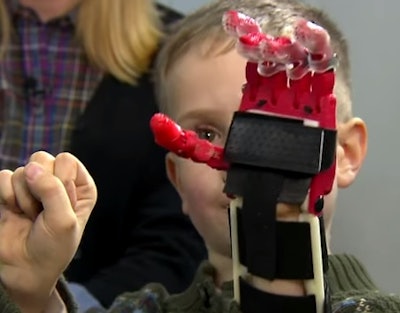
If I were forced to say which technological innovation in the last few years has been more profound and lasting on the world as a whole, I would have to say 3D printing. Of course, having to choose just one innovation is an extremely difficult task because we’re living in one of the most exciting periods of technological progress ever.
Still, 3D printing is a development unlike anything else. It’s not a stretch to say that’s a game-changer — a kind of over-the-top technology that is disrupting and improving many industries. Indeed, it’s a technology that seems almost too good and too outlandish to be true. But make no mistake; 3D printing is already here and is utterly transforming the manufacturing and information technology industries. One research firm estimates that the market for 3D printing, which currently stands at annual $2 billion, could reach $12 - $ 18 billion a year by 2025.
But that estimate takes into account the market for 3D printers alone. In terms of an overall industry impact, including the prototypes, machines, parts made by those printers and services, 3D printing could become a $550 billion-a-year industry by 2025, according to McKinsey. Why such a mind-boggling dollar figure? Because 3D printing stands to turn the entire research & development process on its head by consolidating it into a few clicks of the mouse.
Here’s what I mean: The manufacturing industry continues to follow the same product development and manufacturing cycle for new product introductions as it has for nearly a century. The same steps that an industrial plant in the 1920s had to tick off are essentially what a high-tech manufacturer must do today. They’re concerned with ideation, concept design, prototypes, pilots and mainstream manufacturing.
Depending on the project, it can take several months to go through the entire cycle. What’s so great about 3D printing is that it significantly accelerates initial stages of idea to prototype and fundamentally transform the way the products are manufactured and reducing time to market. This “print-as-you-go” approach has incredibly fascinating pricing ramifications for low-volume items. We’ll see a lot more 3D printing being adopted in areas where it is more suitable and provides for a better ROI — mainly highly customized and highly complex items. On the flip side, 3D technology will allow anyone, anywhere to pitch in on a project as needed. We’ll see more crowdsourcing of design and engineering by organizations that leverage global delivery models.
Those companies will own the IPs for the products they produce will only give the right to end users in order to download and print a certain number of copies of the product. This process is not unlike the licensing models used for software products today. Also imagine what making certain products available over the Internet in the style of Open Source software can do to the improvisation and improvement of large-scale projects.
At Infosys, we’re seeing 3D printing applications for just about every business and industry and across all segments of manufacturing. 3D printing is going to shorten product development time. The market for spare parts becomes a very targeted and economical one because there is no need for warehouses full of back-inventory. From a counterfeiting point of view, the printers discourage a black market of cheaply made parts by rogue parties. For instance, there will be no need to keep an inventory of items and the “predict-manufacture-sell” model will be replaced with “demand-order-design-print.” Just think about not having to maintain an inventory of spare parts for older variants of expensive products. You can print them as needed.
What industry excites me the most when discussing 3D printing? It has to be healthcare. As it stands now, medical valves and synthetic organs are standardized. Every post-op involves a family hoping that the body will accept the implant. In the not-too-distant future, doctors will be able to print out customized synthetic organs and valves that fit each patient with precision. And hey, if this concept works for surgeons, I suppose it could work just as well for clothing retailers. Can you imagine visiting the shoe store only to have your feet “mapped” and a customized pair of shoes printed out within minutes? Talk about bespoke tailoring!
With this impending manufacturing boom comes a significant demand for corresponding IT services. One of the most important functions of IT vis-à-vis new 3D printing programs will be security. Think of how a cyber-thief can copy state-of-the-art components without ever being near the physical plant. As such, companies will need to authenticate all the components involved in a printing project for both warranty and serialization issues.
All of the uncertainties that have surrounded R&D projects and assembly lines will essentially cease to exist when companies properly builds out a 3D printing system in supply chain of manufacturing, as the rolling assembly line revolutionized how companies could bring products to the market that were affordable by the masses, so, too, will 3D printing usher in an entirely new era. When it comes to designing and manufacturing products with a 3D printer, the sky isn't even the limit.
Author Bio
Venkata Seshu Gulibhi (Seshu) is an Associate Vice President and Senior Delivery Manager with the manufacturing business unit at Infosys. He has over 21 years of experience. He has extensive experience in IT Consulting, delivery management, Account Management, Program management and Operations. Seshu has earned a Master of Science Univ. Of Hyderabad and Master of Technology from Indian Statistical Institute, Calcutta.
To read more manufacturing and technology news, sign up for our newsletter. You can also follow Manufacturing Business Technology on Twitter @MBTwebsite.